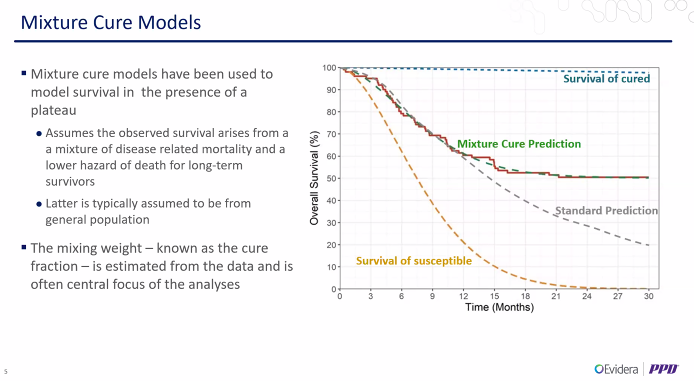
Missed the panel “Value-Based Pricing and Market Allocative Efficiency: How Should Cost-Effectiveness Thresholds be Set to "Optimally" Distribute Value between Payers and Developers?” w @mikepaulden, @MBerdud & Laura Vallejo-Torres at #ISPOREurope?
ispor-europe2020.secure-platform.com/a/gallery/roun…
ispor-europe2020.secure-platform.com/a/gallery/roun…
Laura starts with what her presentation will cover:
1-What is a #CostEffectiveness #Threshold for?
2-What should it reflect?
3-How to estimate it empirically?
4-What are the consequences of setting the decision threshold at != from empirical threshold?
#ISPOREurope
1-What is a #CostEffectiveness #Threshold for?
2-What should it reflect?
3-How to estimate it empirically?
4-What are the consequences of setting the decision threshold at != from empirical threshold?
#ISPOREurope
What is a #Threshold? It is to find out if an intervention generates more benefits gained than lost via the opportunity cost, AND/OR to identify a decision threshold that incorporates other policy objectives.
#ISPOREurope
#ISPOREurope
What should the #Threshold reflect?
Demand side (v): it should reflect the societal values of health gains
Supply side (k): it should reflect the opportunity cost
#ISPOREurope
Demand side (v): it should reflect the societal values of health gains
Supply side (k): it should reflect the opportunity cost
#ISPOREurope
How to empirically estimate the #Threshold?
Demand-side: WTP for health, value of statistical life
Supply-side: observation of past decisions, relationship btw marginal changes in expenditure and health outcomes
#ISPOREurope
Demand-side: WTP for health, value of statistical life
Supply-side: observation of past decisions, relationship btw marginal changes in expenditure and health outcomes
#ISPOREurope
In Spain, they did both supply and demand approaches. The demand-side #Threshold was estimated at €10k-30k/QALY, while the supply-side was €22k-25k/QALY.
#ISPOREurope
link.springer.com/article/10.100…
onlinelibrary.wiley.com/doi/abs/10.100…
#ISPOREurope
link.springer.com/article/10.100…
onlinelibrary.wiley.com/doi/abs/10.100…
What happens if #Threshold != decision threshold? If decision threshold is too low, we’re losing access to affordable interventions, w/ poor incentives for R&D. If too high, we’re using unaffordable technologies, w/ also poor incentives for R&D.
#ISPOREurope
#ISPOREurope
Next up at #ISPOREurope, @mikepaulden talks about a framework for pricing new medicines.
In a competitive market, we have positive consumer surplus & producer surplus. But pharmaceuticals are not operating in a competitive market…
In a competitive market, we have positive consumer surplus & producer surplus. But pharmaceuticals are not operating in a competitive market…

consumer surplus = health gain from new medicine (inc. benefits) + loss in health due to opportunity cost (estimated via the supply-side #Threshold)
Producer surplus = manufacturers’ profit = revenue – cost of supplying medicine (inc. R&D)
#ISPOREurope
Producer surplus = manufacturers’ profit = revenue – cost of supplying medicine (inc. R&D)
#ISPOREurope
The framework makes some assumptions to define the policy #Threshold. If the supply threshold = 15k/QALY, looking at 4 technologies, w/ increasing reserve ICERs, what should the decision threshold be?
#ISPOREurope
#ISPOREurope

If policy #Threshold = 5k/QALY, the blue technology is now profitable, so it is launched. Given its additional benefits & costs = consumer surplus is positive
#ISPOREurope
#ISPOREurope

If policy #Threshold = 15k/QALY, the consumer surplus is zero as all the benefits are offset by the losses. If policy #Threshold = 20k/QALY, all technologies are launched, but they displace more health than they provide --> consumer surplus is negative.
#ISPOREurope
#ISPOREurope

So policy #Threshold should be < supply side threshold, but still high enough so that firms are still profitable.
#ISPOREurope
#ISPOREurope
Next up in #ISPOREurope, @MBerdud from @OHENews on new developments on a pricing framework. In this work, they have tried to incorporate a bargaining process that after the policy threshold is set and the impact of the R&D sunk cost.
ohe.org/publications/b…
ohe.org/publications/b…
The effective ICER is the ICER that corresponds to the price in the market. This effective ICER is between the reserve ICER and the policy #Threshold, depending on the bargaining power of the manufacturer/payer.
#ISPOREurope
#ISPOREurope
What are the macro implications?
If all bargaining power is held by manufacturers, the #Threshold that maximises total benefit is = to supply side threshold, although the manufacturer gets all the benefits and the payer gets none.
#ISPOREurope
If all bargaining power is held by manufacturers, the #Threshold that maximises total benefit is = to supply side threshold, although the manufacturer gets all the benefits and the payer gets none.
#ISPOREurope
If the bargaining power is split 50:50 btw manufacturer and payers, the #Threshold that maximises total benefit is still the supply-side threshold. But the manufacturers make a loss, and, in the long run, R&D investment reduces
#ISPOREurope
#ISPOREurope
Under the split bargaining power scenario, the policy #Threshold should be set so that there are sufficient incentives for R&D investment and higher than the supply-side threshold
#ISPOREurope
#ISPOREurope
The 1st point is that the higher pre-bargaining threshold is relevant only when the #CostEffectiveness analysis is considered prior to and independently of any negotiation over the final price. In practice, negotiations take place with reference to the #CEA
#ISPOREurope
#ISPOREurope
In any case, the final ICER, after price negotiations, still needs to be lower than the supply side #Threshold so that payer surplus is positive – that is, for the health care system to get some positive value
#ISPOREurope
#ISPOREurope
The 2nd point is about sunk costs. In the long-term, firms will respond to whatever threshold is specified by the payer, with less efficient firms having less access to capital and exiting the market.
#ISPOREurope
#ISPOREurope
R&D costs should be thought to increase a medicine’s reverse price hence the reserve ICERs, which impacts on which medicines are adopted at any given policy #Threshold, but does not result in negative producer surplus
#ISPOREurope
#ISPOREurope
How then should we determine the optimal allocation of consumer and producer surplus? Mike favours a public health perspective. Therefore, the optimal threshold is the one that maximises public health (consumer surplus) but with producer surplus too
#ISPOREurope
#ISPOREurope
What about equity weighting? @mikepaulden says that any equity weighting should be equally applied to the benefits gained as well as to the benefits lost due to the opportunity cost, and to other medicines too. Overall, the average policy #Threshold will not change
#ISPOREurope
#ISPOREurope
What about productivity? If we are to consider productivity in the benefits, we should also consider it in the costs.
#ISPOREurope
#ISPOREurope
What about the price after patent expiry? Dynamic pricing considerations should be incorporated in the framework. But it would still not justify a policy #Threshold > supply threshold
#ISPOREurope
#ISPOREurope
What about innovation? Should the policy #Threshold be higher to generate revenue to pay for R&D? Highly uncertain, as greater revenue may not be used for R&D. Policy #Threshold should still be < supply threshold
#ISPOREurope
#ISPOREurope
In sum, Mike concludes that the policy Threshold should always be lower than the supply-side threshold.
#ISPOREurope
#ISPOREurope
Now @MBerdud in response:
1- Pre-bargaining policy #Thresholds are relevant to real-world price negotiations. Agrees that the effective ICER is always <= supply-side threshold
#ISPOREurope
1- Pre-bargaining policy #Thresholds are relevant to real-world price negotiations. Agrees that the effective ICER is always <= supply-side threshold
#ISPOREurope
2- R&D costs should be seen as sunk because the short-term producer surplus has dynamic implications, as developing highly innovative medicines is likely to be riskier and hence less likely to be done
#ISPOREurope
#ISPOREurope
3- In their view, optimising the social surplus is not normative, as it is the sum of the consumer and the producer surplus, although the distribution of the social surplus is
#ISPOREurope
#ISPOREurope
My take: Wow, fascinating, timely & thought-provoking presentations about how to set the #CostEffectiveness #Threshold 👏
I'm firmly in the camp that the policy #Threshold < supply-side threshold but...
#ISPOREurope
I'm firmly in the camp that the policy #Threshold < supply-side threshold but...
#ISPOREurope
I understand that there are valid concerns regarding long-term incentives to investment in R&D 🤔
If you'd like to read an easy introduction on ICERs & thresholds, have a look at aheblog.com/2020/09/23/opp…
#ISPOREurope
If you'd like to read an easy introduction on ICERs & thresholds, have a look at aheblog.com/2020/09/23/opp…
#ISPOREurope
• • •
Missing some Tweet in this thread? You can try to
force a refresh

















